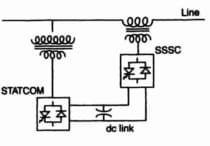1. Radiant heating used for_________.
a. Drying of paints and varnishes
b. Annealing of metals
c. Melting of ferrous metals
d. Any of the above
2. Direct resistance heating is used in___________.
a. Resistance welding
b. Salt-bath furnace
c. Electrode boiler
d. All of the above
3. Resistance ovens used for_________.
a. Vulcanizing and hardening of synthetic materials
b. Drying of vanish coatings, drying and baking of potteries
c. Domestic and commercial heating
d. All of the above
4. The function(s) of an heating chamber is/are to__________.
a. Confine the atmosphere around the charge
b. Store as much of the heat supplied as may be practicable and economical
c. control the cooling rate of the charge and control the distribution of heat within the chamber
d. All of the
above
a. 10-20 cm
b. 25-30 cm
c. 40-50 cm
d. 50-60 cm
6. In direct arc furnace which of the following is of high value ?
a. Voltage
b. Current
c. Power factor
d. All of the above
7. The power factor at which the direct arc furnace operates is_______.
a. Low leading
b. Low lagging
c. High leading
d. Unity
8. For arc heating, the electrodes used are made of________.
a. Graphite
b. Aluminium
c. Copper
d. Tungsten
9. In an arc furnace, the choke is provided to________.
a. Improve the power factor
b. Reduce the surge severity
c. Stabilize the arc
d. All of the above
10. It is desirable to operate the are furnace at a power factor of_______.
a. Zero
b. 0.707 lagging
c. 0.707 leading
d. Unity
11. It is desirable to keep the arc length short in order to_________.
a. Have better stirring action and reduce oxidation problem
b. Increase the life of roof refractory
c. have better heating
d. All of the above
d. All of the above
d. All of the above
c. Either (a) or (b)
d. Varying the arc length
15. The main application of indirect arc furnace is to melt_________.
a. Steel
b. Iron
c. Non-ferrous metals
d. None of the above
16. For power transformers employed for arc furnaces, it is desirable to arrange the furnace and the transformer in such a way that leads are_______.
a. Shorter in length and
placed close together
b. Longer in length and placed close together
c. Shorter in length and placed distant apart
d. In any arrangement
17. In induction heating__________.
a. Heat is produced due to currents induced in the charge by electromagnetic action
b. Magnetic materials can be easily treated in comparison to non-magnetic materials
c. The resistance of the charge must be low and voltage applied must be high in order to produce sufficient heat
d. All of the above
a. Conducting materials may be
magnetic or non-magnetic
b. Conducting but non-magnetic materials
a. AC supply only
b. DC supply only
c. Both (a) and (b)
d. None of (a) (b)
21. In induction heating, which of the following is of high value ?
a. Current
b. Voltage
c. Frequency
d. Power factor
22. Induction furnaces are used for__________.
a. Heating of insulators
b. Heat treatment of castings
c. Melting of aluminium
d. All of the above
23. The advantage(s) of eddy current heating is/are______________.
a. Heat can be made to penetrate into metal surface to any desired depth
b. The area of surface over which heat is produced can be accurately controlled
c. Easy temperature control, little wastage of heat and possibility of heating in vacuum or other special atmosphere
d. All of the above
c. 10 kHz to 400 kHz
d. 10 MHz
25. In case of core-loss induction furnace, the charge should be in ________.
a. Molten state
b. Solid state
c. Either of (a) or (b)
c. Both ferrous and non-ferrous metals
- Electric Drives and Motors MCQ Part-1
- Electric Drives and motors MCQ Part-2
- Electric Drives and Motors MCQ Part-3
- Electric Drives and Motors MCQ Part-4
- Electric Drives and Motors MCQ Part-5
- Electric Drives and Motors MCQ Part-7
- Electric Drives and Motors MCQ Part-8
- Electric Drives and Motors MCQ Part-9
- Electric Drives and Motors MCQ Part-10





0 Comments
If you have any doubt, feel free to ask.